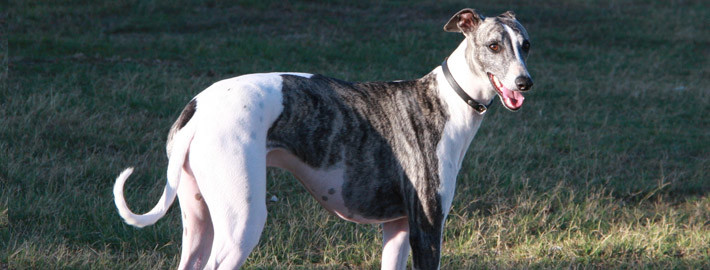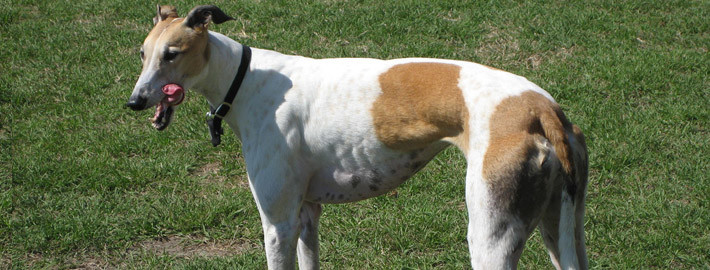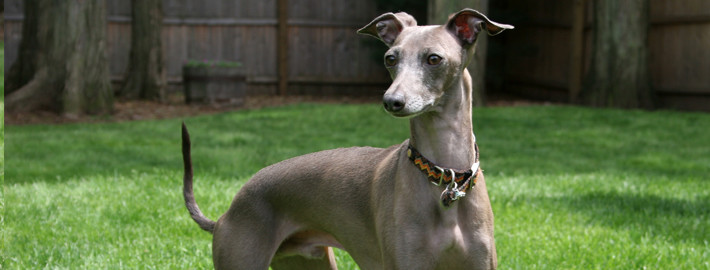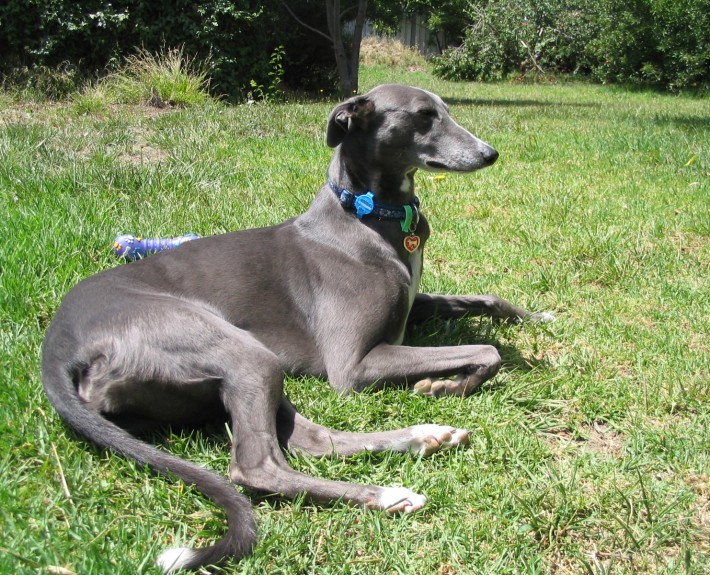What makes the Greyhound Unique?
The ultimate running dog, the greyhound is built for speed. Its long legs and arched back enable it to contract and stretch maximally while executing the double-suspension gallop. It has tremendous muscle mass and light legs, further enhancing speed. The feet are long and narrow, giving maximum leverage. The long tail serves as a rudder and brake when running at high speed. The coat is short and smooth. Two types of greyhounds are available: AKC (show) and NGA (racing). Retired NGA greyhounds are smaller, sturdier and faster than show dogs and may be more inclined to chase small animals. Known as “the world’s fastest couch potato,” the greyhound is quiet, calm and extremely well-mannered indoors. They are good with other dogs, and with other pets if raised with them; outdoors, they tend to chase any small thing that moves. They are reserved with strangers, very sensitive and sometimes timid. Despite their independent nature, they are eager to please.
Breed Groups
Page Contents
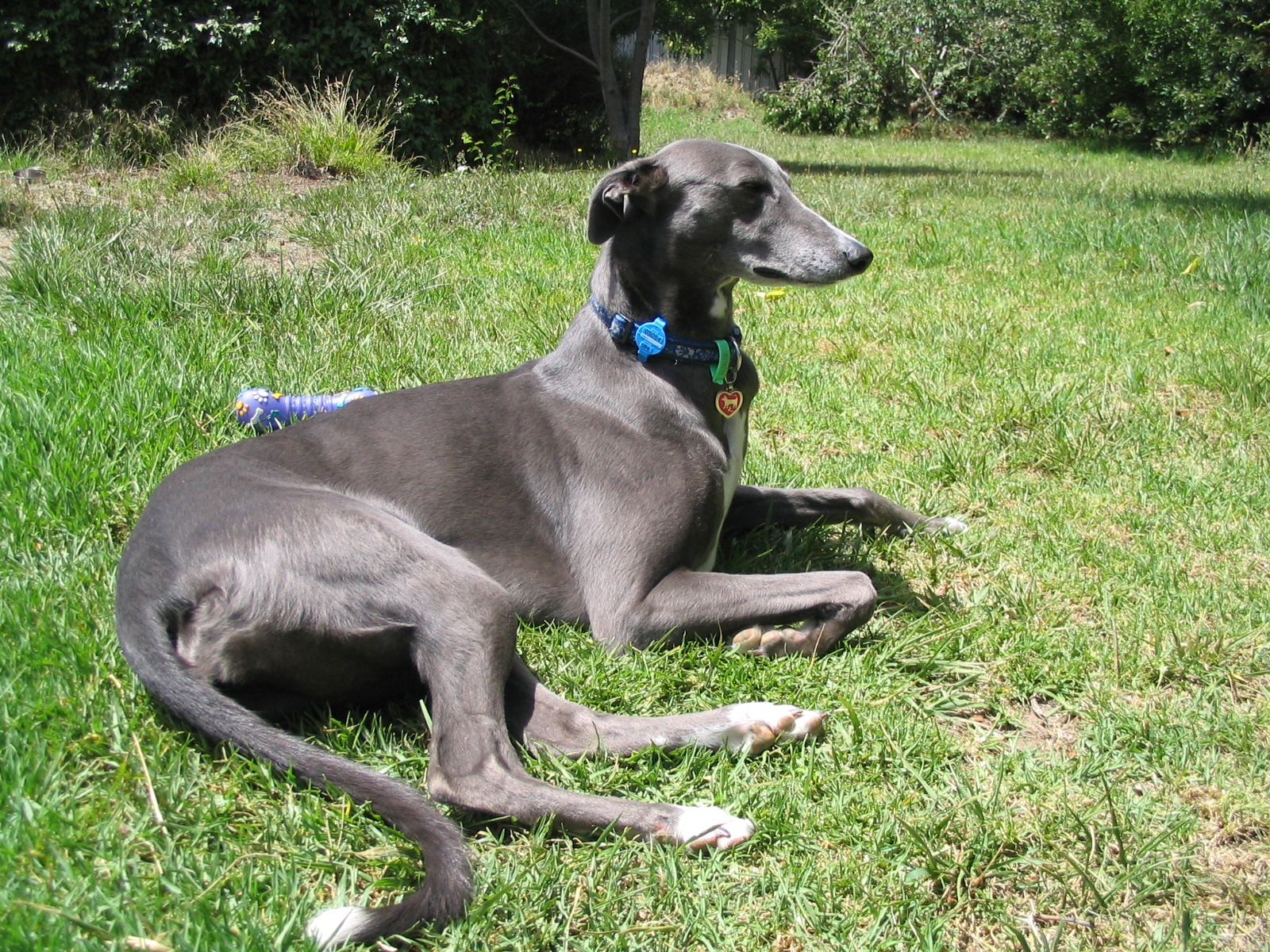
SnapShot
| Size: | Males – 71 to 76 centimetres (28 to 30 in) Females – 68 to 71 centimetres (27 to 28 in) |
| Weight: | Males – 27 to 40 kilograms (60 to 88 lb) Females – 27 to 34 kilograms (60 to 75 lb) |
| Origin: | Middle East and North Africa |
| Life Span: | 10 to 13 years |
| Colour: | White, Brindle, Fawn, Black, Red and Blue (Gray) can appear uniquely or in combination. |
| Litter Size: | 6 to 8 puppies |
Is the Greyhound Right For You?
Although a loving companion, the Greyhound possesses the typical independent spirit of the hound, so patient training is necessary. They enjoy the company of their families as well as other dogs. The breed’s short, smooth coat is easy to maintain. Due to the Greyhound’s athleticism, they need daily exercise, but should be kept on leash or in a fenced area due to their tendency to run. Learn more about purchasing a Greyhound puppy. *Hound Group; AKC recognized in 1885.
*Ranging in size from 60 to 70 pounds.
*Hare hunter.
In 5 Words
- Gentle
- Intelligent
- Athletic
- Quite
- Even Tempered
Characteristics
Learn About the Greyhound
Description
The Greyhound is a tall, slender dog. The head is long and narrow, wide between the ears, with a long tapering muzzle. There is no stop. The small rose ears are held back and folded, and are semi-perked when they are excited. The eyes are dark in color. The slightly arched neck is long. The legs are long with the front legs being perfectly straight. The chest is wide and deep. The long tail tapers with a slight upward curve. The short, fine coat comes in all colors.
Short History of the Greyhounds
Greyhounds have been around for thousands of years, even appearing in ancient Egyptian artifacts and in the writings of the Roman poet Ovid. Beginning in the 9th century, records show English breeders developing the Greyhound into a hunter of deer, foxes and rabbits. They were brought to America in the 16th century by Spanish explorers who used them as guard dogs. Registered by the AKC in 1885, they continue to be a cherished companion in the U.S. and around the world.
Temperament
The Greyhound is not an aggressive dog, as some may believe due to muzzles worn during racing. Muzzles are worn to prevent injuries resulting from dogs nipping one another during or immediately after a race, when the ‘hare’ has disappeared out of sight and the dogs are no longer racing but still excited. The thin skin of the Greyhound can tear easily from a small nick from teeth, so even a minor skirmish can result in stitches and time out from racing. Greyhounds with a high prey drive occasionally wear muzzles outside the racetrack; owners aware that their Greyhound has a high tendency to chase small prey will protect the prey by applying the muzzle.
Contrary to popular belief, adult Greyhounds do not need extended periods of daily exercise, as they are bred for sprinting rather than endurance. Greyhound puppies that have not been taught how to utilize their energy, however, can be hyperactive and destructive if not given an outlet, and they require more experienced handlers.
Caring for Your Greyhound
General Health
Prone to bloat. It is better to feed them 2 or 3 small meals rather than one large one. They are sensitive to drugs, including insecticides. They are also prone to hypothyroidism. However, some of the minor ailments that can affect the breed include osteosarcoma, esophageal achalasia, and gastric torsion. Both the AKC and NGA Greyhounds cannot tolerate barbiturate anesthesia and are susceptible to tail-tip injuries and lacerations, while retired NGA Greyhounds are prone to racing injuries like muscle, toe, and hock injuries.
Grooming & Bathing
Greyhounds have a short, smooth coat that is simple to groom. Brush it weekly with a hound mitt or rubber curry brush to remove dead hair and distribute skin oils that keep the coat shiny. Greyhounds shed, but regular brushing will help keep the hair off your floor, furniture, and clothing. Bathe as needed. If you do a good job of brushing your Greyhound, he probably won’t need a bath very often.
Exercise & Training
Greyhounds that are kept as pets should have regular opportunities to run free on open ground in a safe area, as well as daily long, brisk walks, where the dog is made to heel beside or behind the person holding the lead. In a dog’s mind the leader leads the way and that leader needs to be the human. Greyhounds love a regular routine.

